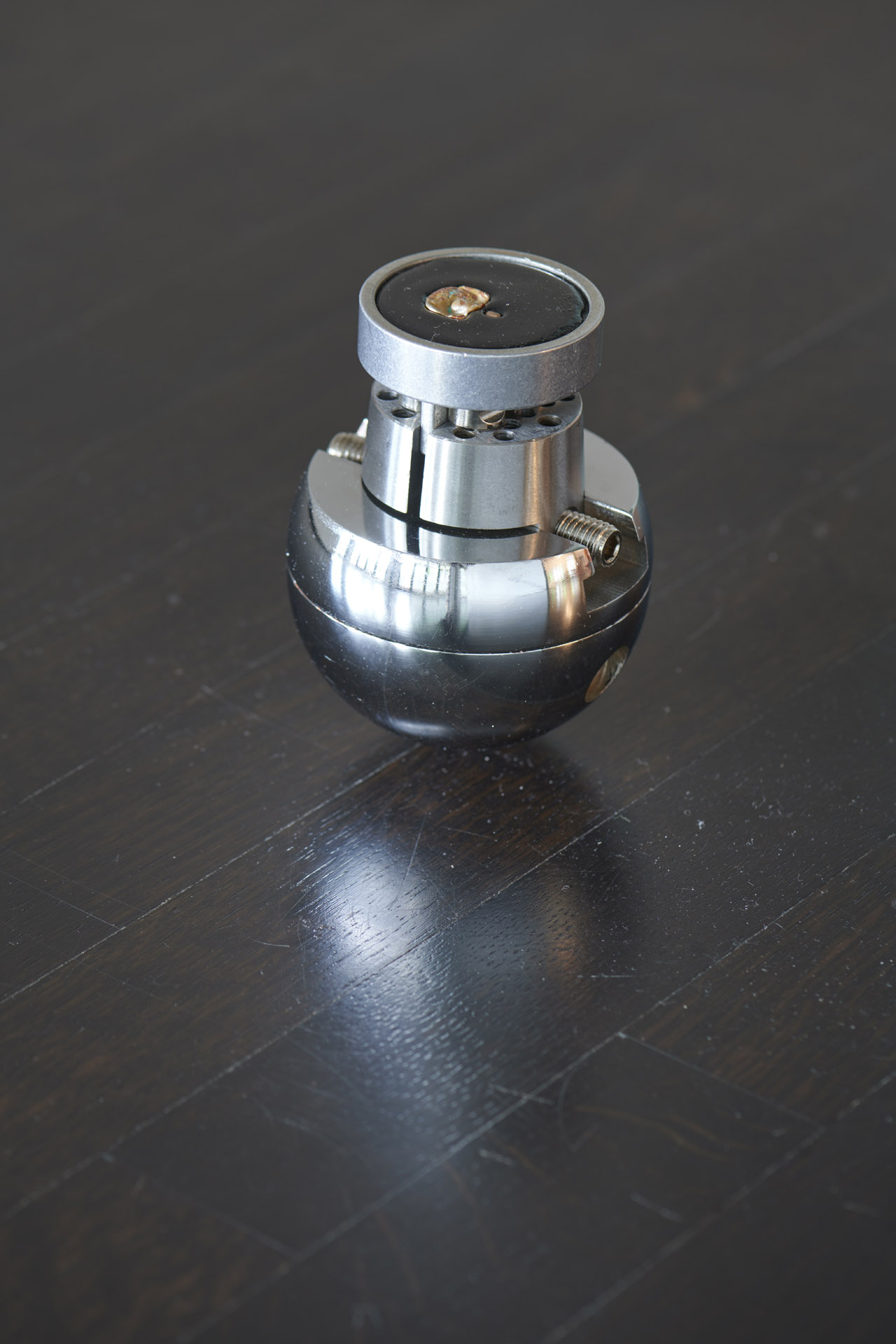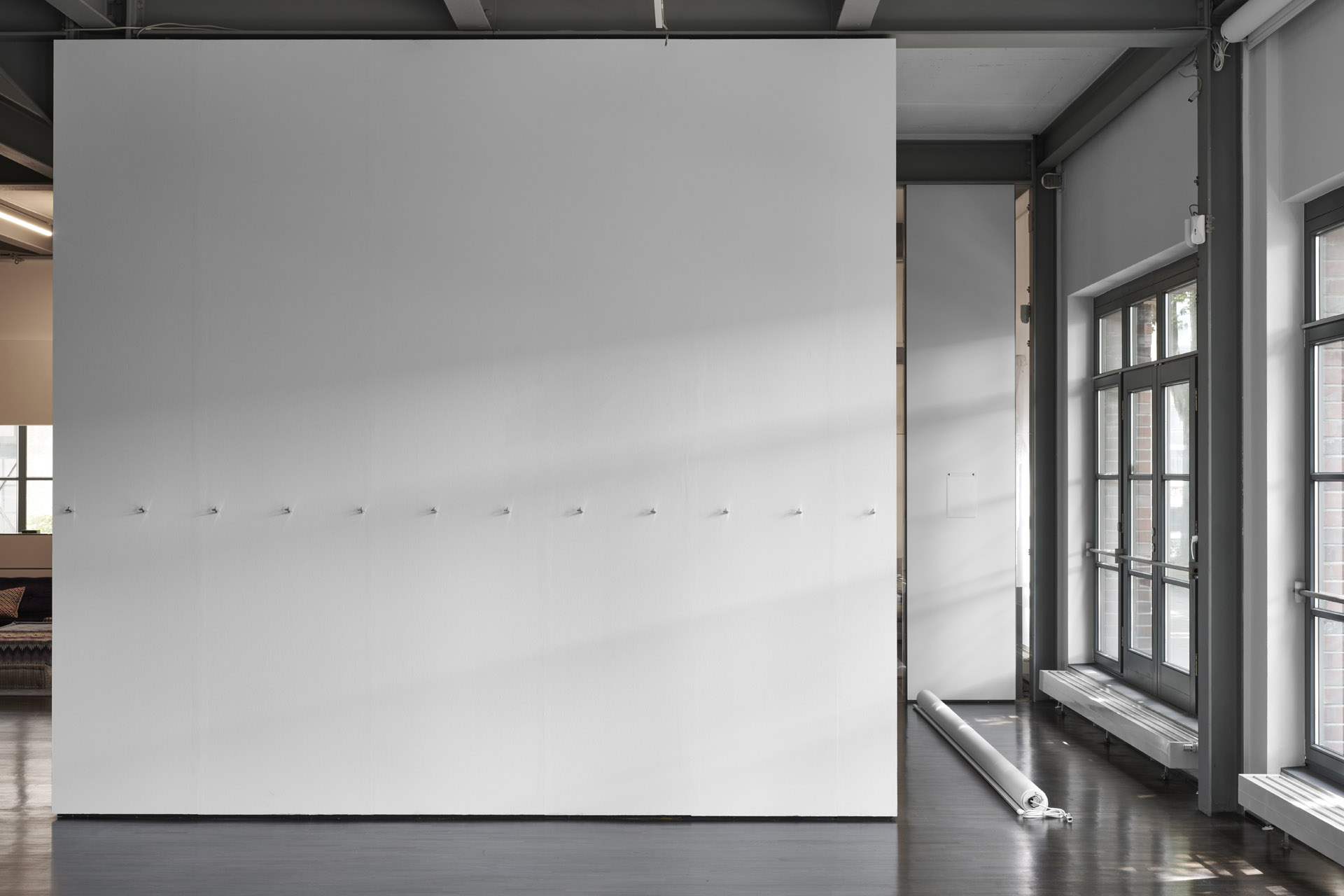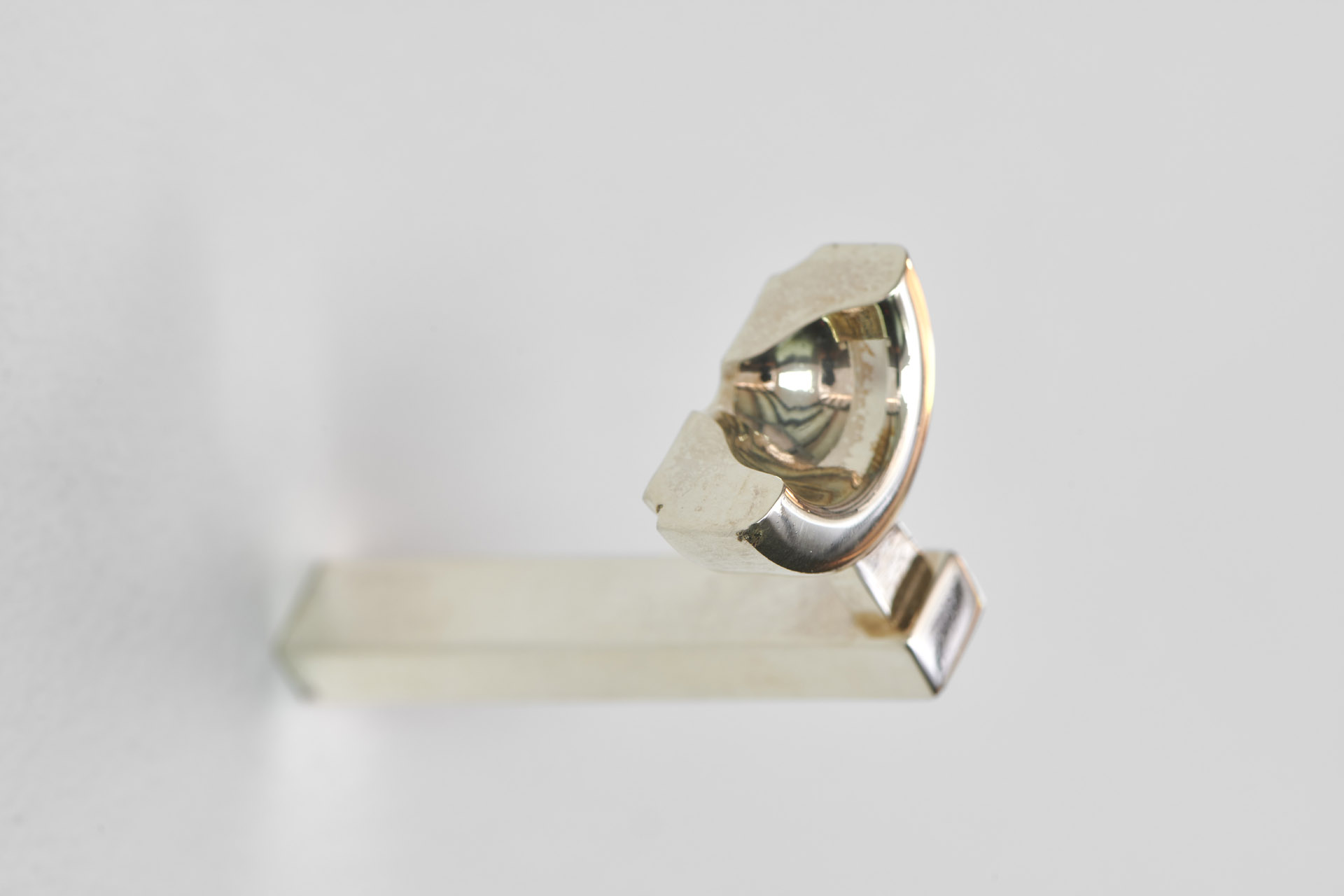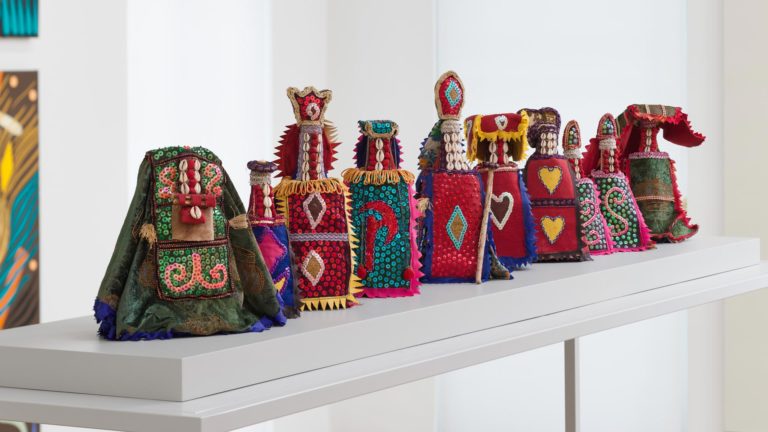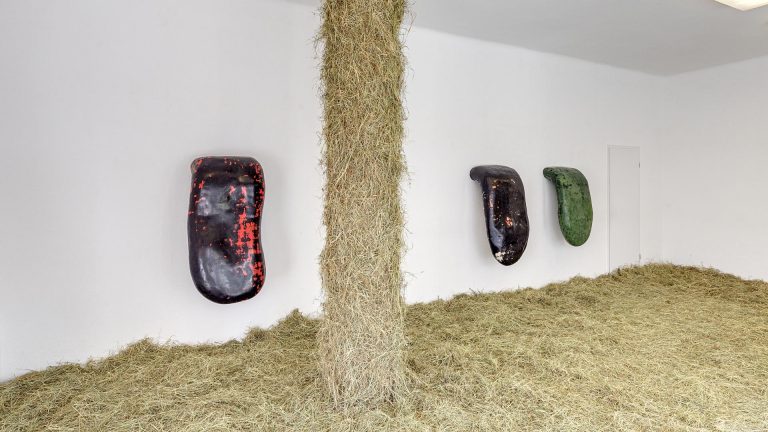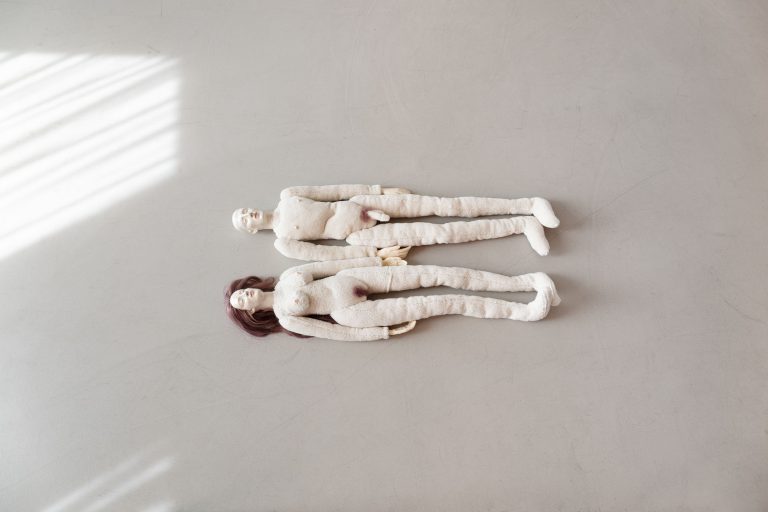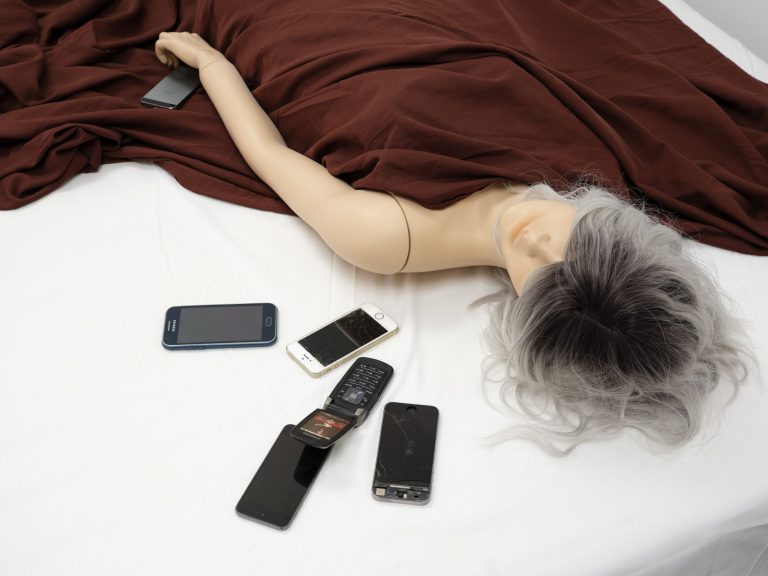Artists: Patricia L. Boyd, K.R.M. Mooney, Philip Seibel
Exhibition title: I heard myself close my eyes, then open them
Curated by: Nele Kaczmarek
Venue: Braunsfelder, Cologne, Germany
Date: May 14 – August 13, 2021
Photography: All images copyright and courtesy of the artist and Braunsfelder, Cologne
The term phototropism refers to the way plants move in response to light. Depending on the type and intensity of the light source and the kind of plant, individual leaf stalks, branches, or roots turn toward or away from the light, regenerating new tissue or making it degrade. The spatial position of the plants and the changes to their shape are directly related, with the response to the external stimulus (the light) and the internal movements of the plants, their inner logic, intermingling. These external and internal movements are so complex that scientific predictions about the exact changes these plants experience under the influence of light are almost impossible to make. The inner drive and environmental influences are negotiated anew with every movement of the plant.
In resonance with the phenomenon of phototropism, the artists in the exhibition “I heard myself close my eyes, then open them,” Patricia L. Boyd, K.R.M. Mooney, and Philip Seibel analyse the relationship between individual thought, action patterns and designated environments. How does the environment, with its architecture, objects, discourses, and moods shape bodies and types of movement? And to what extent do these factors inscribe themselves in the places surrounding these bodies? The three artists share a particular interest in traces that, as Oier Etxeberria describes, convey “how our relationship to any sphere is determined by movement, change and repetition.”[1] Examining routines, their regularities, deviations, and especially their transformative potential, the exhibition brings together works in transition. The works on view have been or are being reshaped in many ways and thus create a trans-temporality. Particular attention is paid to touch as a sensual gesture that mediates between the physical and extra-physical reality.
Philip Seibel’s sculptures Radiators, 2019–22, acquire their special tension from the combination of industrial-looking surfaces with restrained and precise painterly settings. The two apparently disparate forms of production are nevertheless the result of a similarly time-consuming manual activity. In their box-shaped construction and their solitary, high positioning in the space, the sculptures look like something between an altar and a ventilation system, shifting between the polar opposites of extremely fetishized objects and ones that are hidden by their functionality. As Seibel notes, the works are driven by a desire to “create a presence of something that remains hidden.” They tell of the longing to gain access to something that lurks in the background, perhaps is even unconscious, which is also evident in the integrated reliefs as found paintings. At the same time, the air slits in the sculptures refer to a usually invisible dialogue between object and bodies, which are equally surrounded and penetrated by air particles and are thus constantly engaged in a silent exchange.
A current of airflow or the direction of movement is also the starting point for the electroplated-plated objects by K.R.M. Mooney, entitled Partials, 2021. Their display, mounted on the wall just below standard level, serves as a reminder of the objects’ origin as the mouthpieces of various wind instruments. Recalling sound and substance, the aural space is a threshold between private and public space, in which, as Lorenz Aggermann writes, the “outside world becomes, thanks to breathing, nutrition, smell, and taste, very directly the inner world” and this way a “multidimensional time-space.”[2] Partials inherit a lineage (Roth, Ludwig, Bach) and anatomy (throat, contour, cup, shoulder), their fragmentation reconditions the pursuit of knowledge production and categories, offering instead slight variables to express a vast scale of immaterial and tonal effects.
Windows, albeit here domestic ones, feature and are the means by which Patricia L. Boyd produces photograms. In the exhibited diptych and triptych, both Untitled, 2021, moments of time are exposed and presented, staggered and adjacent, to form flat, indexical images looking neither in nor out of the artist’s apartment. In the video work Sweepings, 2019, Boyd accumulates hand-written and typed excerpts from to-do lists. Together, rendered more partial and anonymous, the work captures something of the social and economic, physical and psychological micro-movements that structure our bodies, everyday life and surroundings.
The exhibition “I heard myself close my eyes, then open them” them at Braunsfelder, Cologne will be accompanied by a publication.
-Nele Kaczmarek
[1] Etxeberria, Oier: “Exercises: The Second Wind.” In: Cybernetics of the Poor, Berlin 2020, p. 238.
[2] Aggermann, Lorenz: “Der offene Mund. Eine unergründliche Figuration des Oralen.” In: Das Orale: Die Mundhöhle in Kulturgeschichte und Zahnmedizin. Berlin 2013, p. 238.












